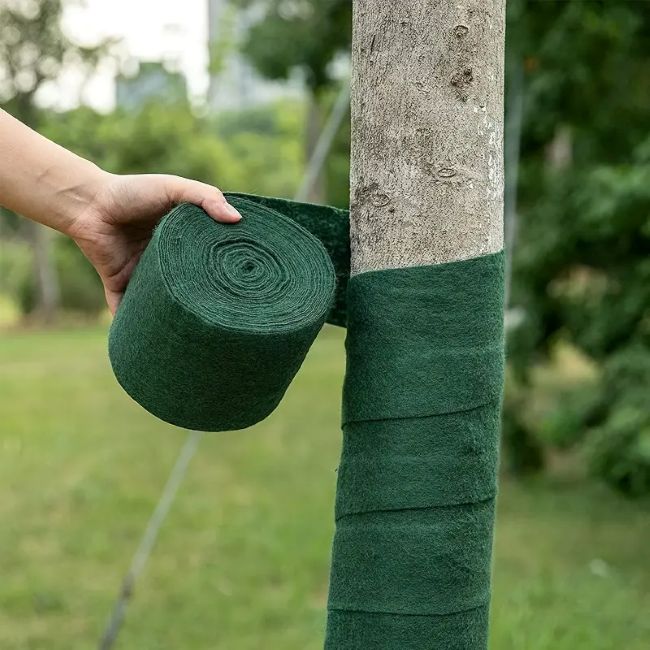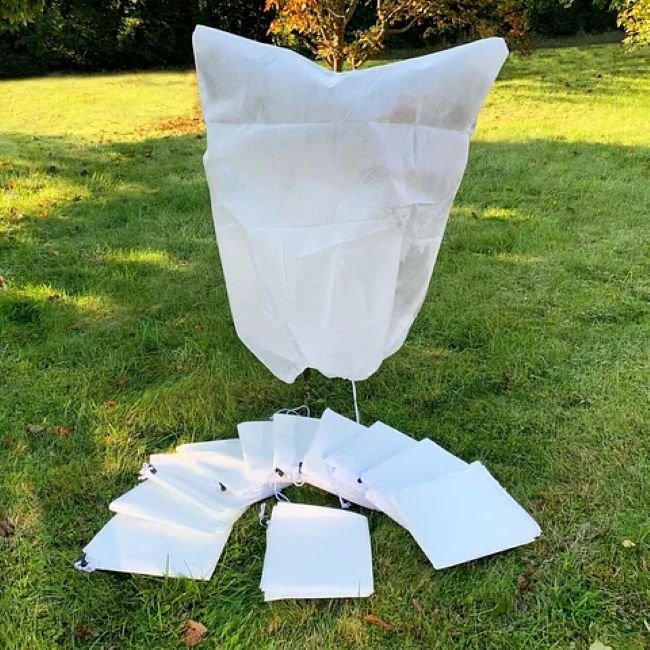Protecting Olive Trees from Severe Winter Frost in the UK: Wrapping Stems and Using Fleece Bags

Olive trees, with their graceful silvery leaves and Mediterranean heritage, have become increasingly popular among UK gardeners. However, these hardy yet frost-sensitive trees require thoughtful protection during the coldest months, particularly when severe winter frosts strike in January. Properly wrapping the stems with fleece and covering the tree heads with fleece bags can help olive trees survive harsh winter conditions and thrive in the spring.
Why Olive Trees Need Winter Protection
Although olive trees can tolerate mild frost, prolonged exposure to sub-zero temperatures can damage their delicate foliage, stems, and root systems. Younger trees and those planted in exposed areas are particularly vulnerable. In the UK, the risk of frost damage peaks in January when temperatures can dip significantly. Taking proactive measures to shield your olive trees ensures their survival and minimizes stress on the plant.
Materials Needed for Frost Protection
Before starting, gather the following materials:
- Horticultural fleece: Lightweight yet insulating, fleece is ideal for wrapping the stems and covering the heads of the trees.
- Fleece bags: Pre-made fleece bags are convenient and easy to use for covering the tree’s canopy.
- Hessian or jute fabric (optional): Provides an extra layer of insulation for particularly cold regions.
- String or garden ties: For securing fleece in place.
- Mulch: To insulate the base of the tree.
Step-by-Step Guide to Protecting Olive Trees
- Prepare the Tree
Before wrapping, ensure the tree is healthy and free of damaged or diseased branches. Trim any dead foliage, and lightly prune to allow for easier wrapping. - Wrap the Stems: A Medical Bandage Approach
- Treat the wrapping process as you would apply a medical bandage to an arm or leg. Start at the base of the tree trunk, ensuring a secure foundation.
- Use a roll of horticultural fleece, overlapping each layer slightly as you wrap upwards along the stem. This overlapping technique mimics how a bandage protects and insulates an injured limb, ensuring there are no gaps for cold air to penetrate.
- Be mindful of tension: the fleece should be snug but not overly tight, allowing the tree to “breathe” while still providing insulation. Too tight a wrap could restrict airflow or damage the bark, just as a too-tight bandage can restrict circulation.
- Secure the fleece at regular intervals with string or ties, ensuring it stays in place even in windy conditions.
- Important Note on Moisture Management
While wrapping the stem, it’s crucial to ensure that the fleece does not absorb and retain excessive moisture. If fleece becomes soaked, it can hold water against the stem, which, when combined with warming temperatures, can promote mold, fungal growth, and disease. This is especially risky if the weather fluctuates between freezing nights and milder, damp days.
Synthetic Fleece Advantage: Synthetic horticultural fleece is designed to resist water absorption, significantly reducing the risk of water retention against the tree’s stem. This makes it an excellent choice for winter protection, as it provides insulation without creating a damp environment that could harm the tree.
- Cover the Tree Heads
- If you are expecting a heavy period of prelonged frost place a fleece bag over the canopy of the tree. If you don’t have a pre-made bag, you can fashion one by cutting a large piece of fleece and folding it over the top of the tree.
- Ensure the fleece covers all branches and leaves, extending slightly below the canopy to trap warm air inside.
- Secure the bag at the base of the canopy with string or ties.
- Insulate the Base
- Spread a thick layer of mulch around the base of the tree to insulate the roots. Organic materials like straw, wood chips, or leaf mold are excellent options.
- Avoid piling mulch directly against the trunk, as this can lead to rot.
- Monitor and Adjust as Needed
- During milder winter days, consider temporarily loosening the fleece to allow air circulation and prevent excess moisture buildup, which can lead to fungal issues.
- Re-secure the fleece promptly before temperatures drop again.
Additional Tips for Olive Tree Winter Care

- Choose the Right Location: Plant olive trees in a sheltered spot, such as near a south-facing wall, where they are protected from cold winds.
- Use Potted Trees for Flexibility: If your olive tree is in a pot, move it to a greenhouse or conservatory during the harshest winter weeks.
- Keep an Eye on the Forecast: Be prepared to add extra layers of protection during particularly severe cold snaps.
Wrapping olive trees with fleece and using fleece bags, much like applying a protective bandage, is a simple yet effective way to safeguard them against the harshest winter frosts in the UK. Ensuring the fleece remains dry, particularly with synthetic materials that resist water absorption, is a vital part of preventing mold and disease. By carefully insulating the trunk, stems, and canopy with moisture-resistant materials, you ensure that your olive trees remain protected, resilient, and ready to flourish when warmer weather returns.